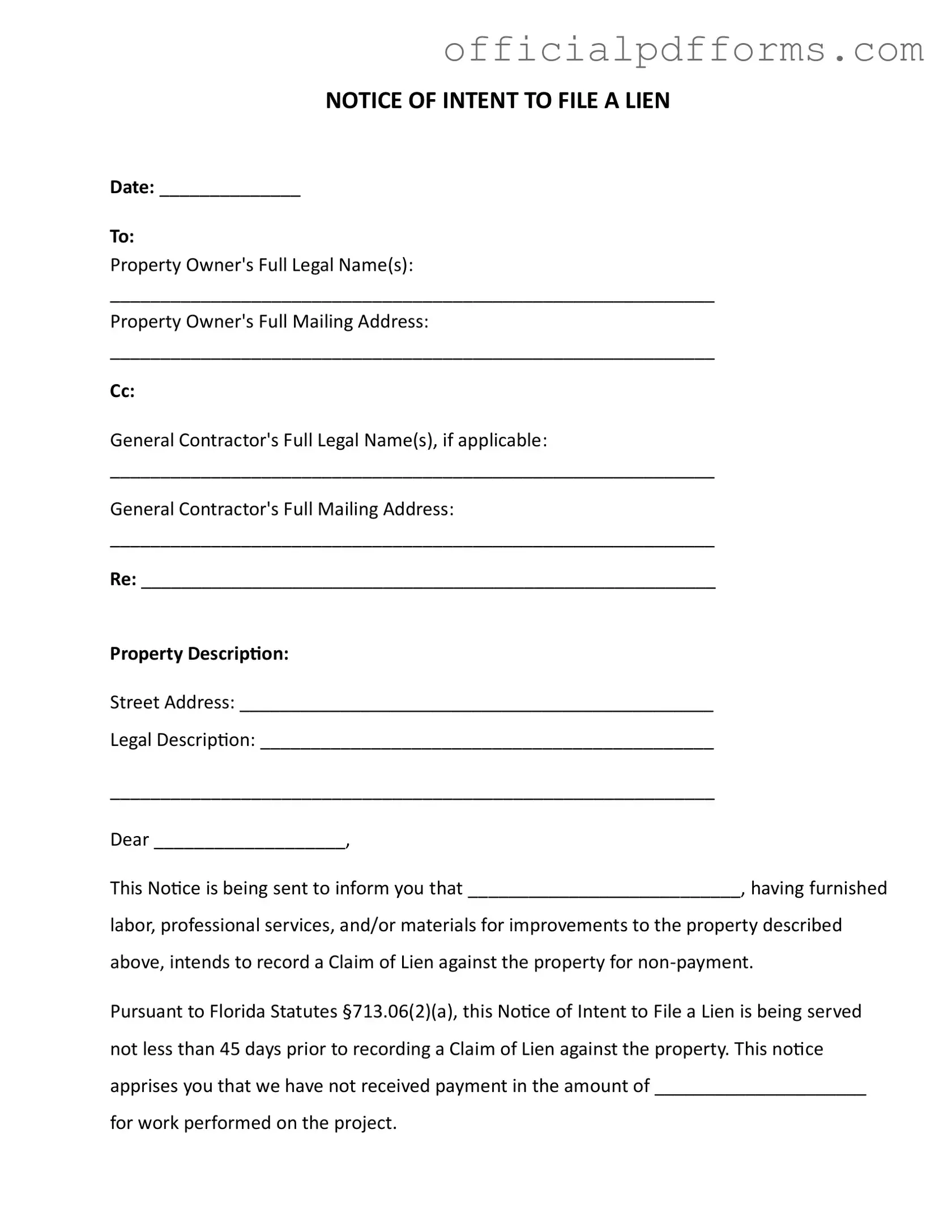Fill in a Valid Intent To Lien Florida Form
The Intent To Lien Florida form serves as a formal notice to property owners regarding unpaid labor, materials, or services provided for property improvements. This document notifies the owner of the intent to file a lien if payment is not received within a specified timeframe. It is crucial for both property owners and contractors to understand this process to avoid potential legal consequences.
To fill out the form, please click the button below.
Access Form Online
